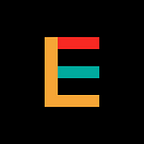Building Community at our Hackathon
By the Make the Breast Pump Not Suck Team
In a little less than a month, we will be kicking off the second-ever Make the Breast Pump Not Suck Hackathon. In the four years since our last event, the world has changed and so has our perspective of what is important in breastfeeding innovation.
If you have been following our website, then you know we have been operating under a set of 5 core values. The first two — “We are inclusive and intersectional” and “We design for equity” — are relevant to an update we want to share today on our process for building a community at our hackathon event.
Recently, we published notifications about acceptances to the hackathon on the Facebook group Hack the Breast Pump. We had an incredible group of people apply from all over the country, people with really deep passions about breastfeeding innovation. Due to limited space and funds and an overwhelming number of applications, we could only accept 20% of the applications, about 110 people. Of those selected, 8 people received breastfeeding innovation fellowship spots for travel support.
What guided our criteria were specific metrics around domain expertise, racial diversity, gender diversity, geographic diversity, and priority for young people and newcomers. We chose these metrics in order to prioritize voices which have been previously marginalized in the conversations around breastfeeding. In the interest of transparency, here are the results.
Domain expertise
Of the accepted participants:
10% are advocate moms/parents/bloggers
10% are health practitioners
25% are design/arts/communications specialists
25% are engineers/tech
15% are students and young people
5% are educators/academics
Racial diversity
Of the accepted participants, 70% identify as people of color and 30% identify as white. More specifically:
15% identify as Asian
37% identify as Black or African-American
11% identify as Hispanic
2% identify as Native American
5% identify as Other POC
29% identify as White
Gender diversity
Of the accepted applicants:
76% identify as female
21% identify as male
5% identify as non-binary
Additionally, we gave priority to people who said they identified as LGBTQ+
Geographic diversity
Of the accepted applicants:
35% are from Massachusetts
21% are from California and New York
20% are from Southern and Non-Coastal states
24% are from other states and international locations
Socioeconomic diversity
Although we did not ask specifically about household income in our application, we were able to gather information about socioeconomic diversity from applicants’ comments about their jobs, economic situation, and requests for travel support. We gave priority to low-wage workers in our acceptances.
We are proud to have reached our goal of ensuring that our event includes the voices of women of color, parents on limited budgets, and LGBTQ+ parents, so that we can ensure they are centered in breastfeeding innovation. We believe that this will allow us to ultimately be more impactful with our equity goals.
To all of those who won’t be joining us at the event, we encourage you to stay connected and we promise to stay connected with you. There are a few ways to do this:
- Use the Hack the Breast Pump Facebook group to share your project ideas or current progress.
- Stay tuned during the event from April 27th — 29th for Facebook Live coverage of the kickoff night, keynote and awards. We’ll be linking it on our Twitter account @BfInnovation!
- Check out the Make the Breast Pump Not Suck Research page for a full book of real people’s stories about what it’s really like to breastfeed and pump in the United States (available late April!). If you are a designer or entrepreneur, you can use the insights collected in the “What could have improved the experience” section of each story to develop meaningful solutions to existing pain points for new parents. Refer to the stories as design personas to ensure that your team isn’t just innovating for the one percent.
Equity and great design are not mutually exclusive.
We hope that everybody who has our project on their radar continues to utilize their passion, life story and expertise to make the world a better place for breastfeeding parents. We all have a role to play in catalyzing an inclusive and intersectional movement in breastfeeding innovation. We are looking forward to sharing more about what it’s like to design for equity in the weeks ahead.
Questions? Reach out to breastpump-organizers@media.mit.edu and be sure to follow along with #breastfeedinginnovation
